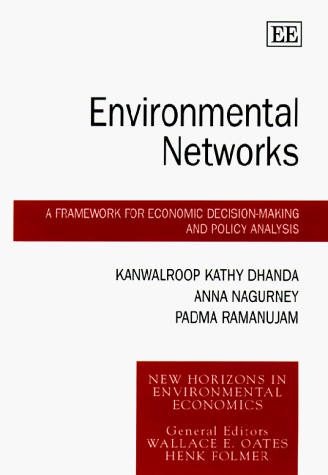New Horizons in Environmental Economics
1 total work
Environmental Networks
by Kanwalroop K. Dhanda, Anna Nagurney, and Padma Ramanujam
The book first discusses the foundations of environmental economics before going on to apply the environmental network approach to different firm structures. The authors then extend the analysis to incorporate multiple products and pollutants, the presence of transaction costs, the availability of investment in production technologies, and the issue of noncompliance versus compliance. They also apply the network approach to pollution caused by transportation and assess the success of permits in limiting this. The authors then formulate integrated models, analyzing the use of permits and taxes in firms, producers, and consumers, as well as transportation and trade routes.
This book will be of interest to students, researchers, practitioners, and policymakers in environmental and transport economics.
